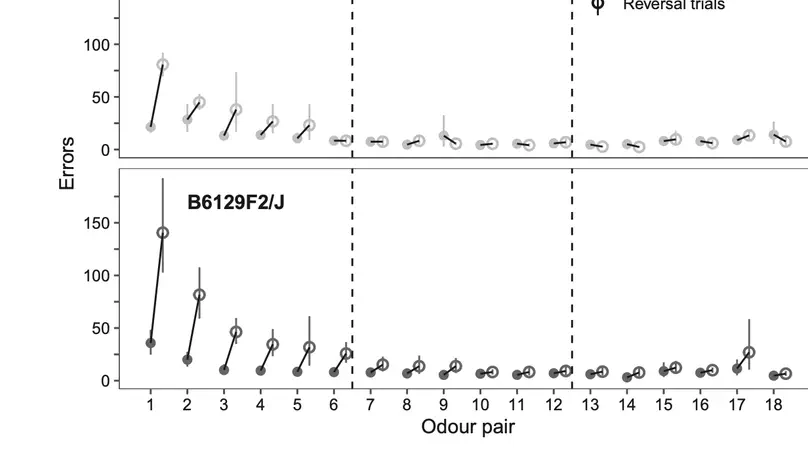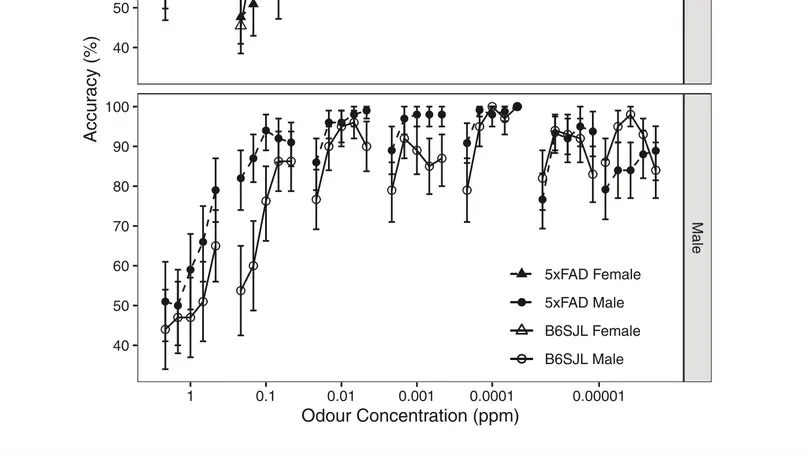Biography
Kyle Roddick is an assistant professor in the Department of Psychology, Mount Allison University. His research interests include behavioural neuroscience, learning and memory, transgenic disease models, and quantitative methods.
- Behavioural Neuroscience
- Learning and Memory
- Olfaction
- Transgenic Models
- Statistics and Research Methods
- Reproducible Research
-
PhD in Psychology/Neuroscience, 2023
Dalhousie University
-
MSc in Psychology/Neuroscience, 2012
Dalhousie University
-
BSc in Neuroscience, 2010
Dalhousie University
Skills
Experience
Responsibilities include:
- Mentoring Students
- Organizing Experiments
- Managing Budgets
- Applying for Grants
Featured Publications

Male and female 3xTg-AD mice between 5 and 24 mo of age and their B6129F2/J wild-type controls were tested on a series of 18 olfactory discrimination and reversal tasks in an operant olfactometer. All mice learned the odor discriminations and reversals to a criterion of 85% correct, but the 3xTg-AD mice made fewer errors than the B6129F2/J mice in the odor discriminations and in the first six reversal learning tasks. Many mice showed evidence of near errorless learning, and on the reversal tasks the 3xTg-AD mice showed more instances of near errorless learning than the B6129F2/J mice. There was no evidence of an age effect on odor discrimination, but there was a decrease in errorless reversal learning in aged B6129F2/J mice. In long-term memory tests, there was an increase in the number of errors made but no genotype difference. The high level of performance indicates that the mice were able to develop a “learning to learn” strategy. The finding that the 3xTg-AD mice outperformed their littermate controls provides an example of paradoxical functional facilitation in these mice.

Although Alzheimer’s disease is most often studied in terms of memory impairments, olfactory dysfunction begins in the early stages. We tested olfactory learning, sensitivity, and response bias using signal detection methods in 12-month-old male and female 5xFAD mice and their wildtype controls in the operant olfactometer. Odor detection was not reduced in the 5xFAD mice, but learning was, which was worse in female 5xFAD mice than in males. Female mice were more conservative in their response strategy. Signal detection analysis allows us to discriminate between cognitive and sensory deficits of male and female mouse models of AD.
Recent Publications
Contact
- 49A York St, Sackville, NB E4L 1C7